New Bay Program report offers a roadmap for combating rising water temperatures
Planting trees and conserving forests is critical for combating temperature increases
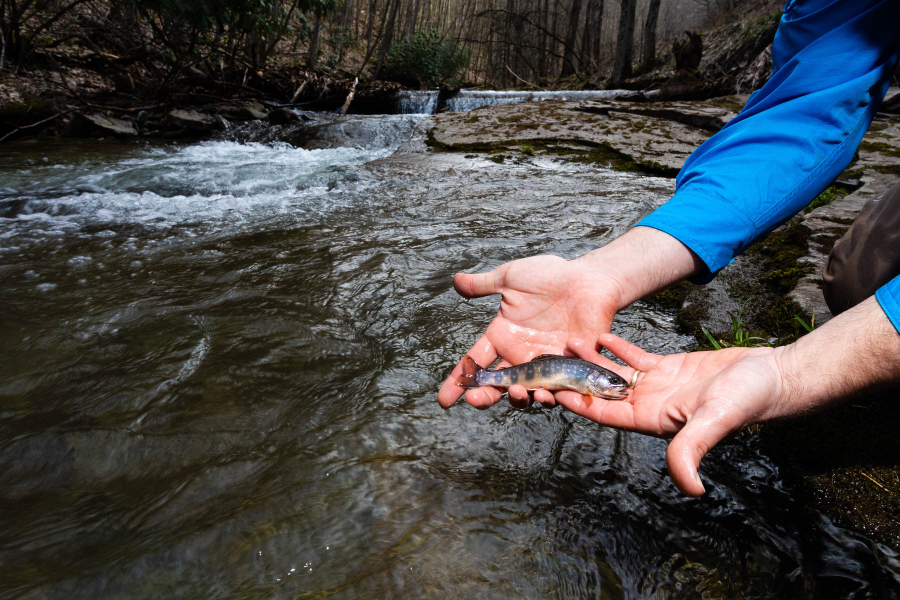
The average temperature of the water is increasing across the Chesapeake Bay watershed, placing pressure on an already vulnerable ecosystem. While the changes might seem minor from a human perspective—a roughly 1.2-degree Celsius increase from 1960 to 2010— even the smallest shifts in temperature can cause a waterway to become uninhabitable for certain species and make our pollution reduction and habitat management practices less effective.
The Chesapeake Bay Program's Scientific and Technical Advisory Committee (STAC) sponsored a workshop in 2022, supported by many partners in the Chesapeake Bay Program, to investigate the various impacts of increasing water temperatures. The committee recently released a report that summarizes the major findings from the workshop as well as recommendations for how to reduce and adapt to these changes.
The STAC report is one of the most comprehensive of its kind, synthesizing the causes and effects of rising water temperatures in the Bay watershed and impacts to wildlife and their habitat. It gives everyone who works in Chesapeake Bay restoration a roadmap for not only moderating temperature increases where we can with conservation strategies and best management practices, but also adapting to an ecosystem that’s already begun to change.
What’s causing water temperatures to rise?
In the Chesapeake Bay watershed, there are multiple causes of increased water temperature, and they depend on where you are in the region.
In the tidal Chesapeake Bay, warming air temperatures is playing the biggest role in raising water temperatures. As greenhouse gases are emitted, the air temperature increases, which in turn, warms the water during most months of the year. Increasing ocean temperatures are also believed to contribute significantly to the summer warming of the Bay, between June and October.
To a lesser extent, sea level rise is also warming the Bay’s waters, particularly during the winter months of November through February, though it has a slight cooling effect in the summer. The water flowing into the Bay from streams and rivers also has a slight warming effect in some of the upper tidal tributaries. However, both of these factors are minor compared to increasing air and ocean temperatures.
For the non-tidal portions of the watershed—the thousands of freshwater streams and rivers that flow into the estuary—the report found that water temperatures are rising not only from increases in air temperatures, but also from changes occurring on the land. More of the watershed is covered with roofs, roads and other impervious surfaces that heat the rainwater as it runs off into streams. There are also fewer trees and forest buffers to cool those waterways. Development may also change physical characteristics of a stream that in turn worsen temperature increases. Groundwater features like springs, which would usually cool the water, can be degraded by too much surrounding land development.
How are rising water temperatures impacting the Bay ecosystem?
Rising water temperatures are already threatening many of the Chesapeake’s iconic critters.
Species that depend on cold water habitats in the Bay’s headwaters, such as brook trout and checkered sculpin, will be most immediately affected by higher temperatures due to their exposure and sensitivity to warmer water. These species can only survive in streams under certain temperatures, and their spawning grounds are also limited based on how cool the water is.
Warm water species such as blue crabs
and certain freshwater fishes might be more tolerant to higher temperatures but are still sensitive to extreme temperatures and the indirect effects of warmer waters. The STAC workshop cited various indirect impacts of temperature increase to habitat quality, including algal bloom production, bacteria outbreaks, the distribution and toxicity of other pollutants, an increase in invasive species and decreases in dissolved oxygen.
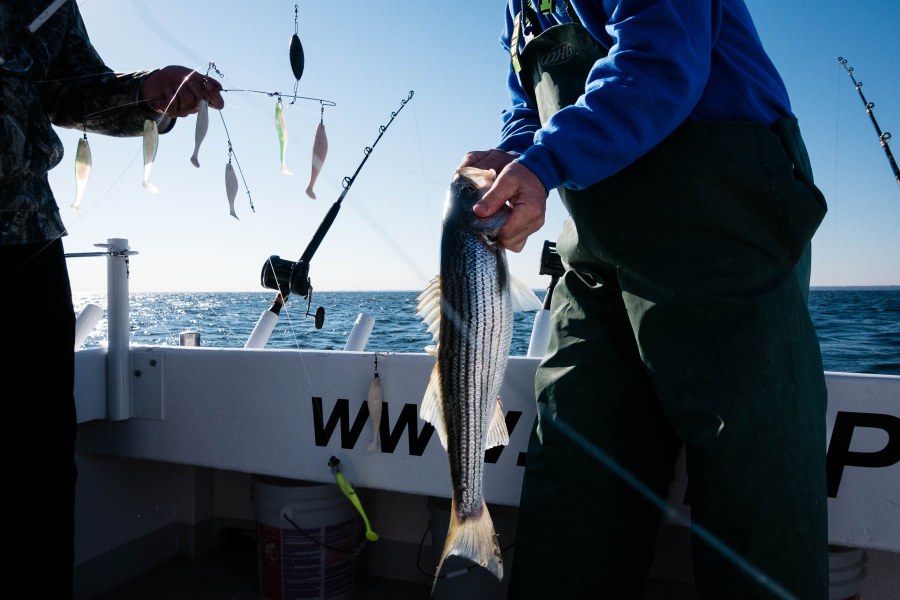
Species such as striped bass, which were largely restored due to management by the Bay Program partnership in the 1980’s and 90’s, are struggling to adapt to the lower oxygen levels that are magnified by warming waters. Warm water holds less oxygen, which means that fish such as striped bass have to swim lower in the water column where there are still suitable temperature and oxygen levels. However, due to excess nutrients, bottom waters can have low dissolved oxygen. With warming temperatures at the surface and low dissolved oxygen at the bottom, fish are squeezed in the middle and have less suitable habitat. This makes them more vulnerable to predation and requires them to compete more for food with other aquatic life.
The habitats that the Bay critters rely on are also being affected. The submerged aquatic vegetation (SAV) species, eelgrass, is particularly sensitive to temperature increases and is significantly declining in the southern region of the Bay due to these changes. SAV is critical habitat for species like blue crabs and juvenile fishes and helps keep nutrients out of the water.
On the bright side, certain species in the Chesapeake Bay may be positively impacted by warming waters. Forage fish such as bay anchovy and menhaden, as well as blue crabs will enjoy a longer growing season as well as an expanded northern range. Certain species of SAV, including widgeon grass, will also likely expand their range throughout the Bay, resulting in a higher overall abundance of seagrass in the estuary. Oysters, which are temperature tolerant, will have more food availability from algae growth, a longer growing season, reduced winter mortality and a lengthened spawning season.
There will even be newer species entering the Bay that will have economic benefits. Southern species, such as white shrimp and red drum, are already moving into the Bay in increasing numbers, so much so that there is the potential to support new commercial fisheries in the future.
However, nearly all the Bay’s marine life will be stressed by a reduction in dissolved oxygen or the drop in suitable habitat that warming waters cause.
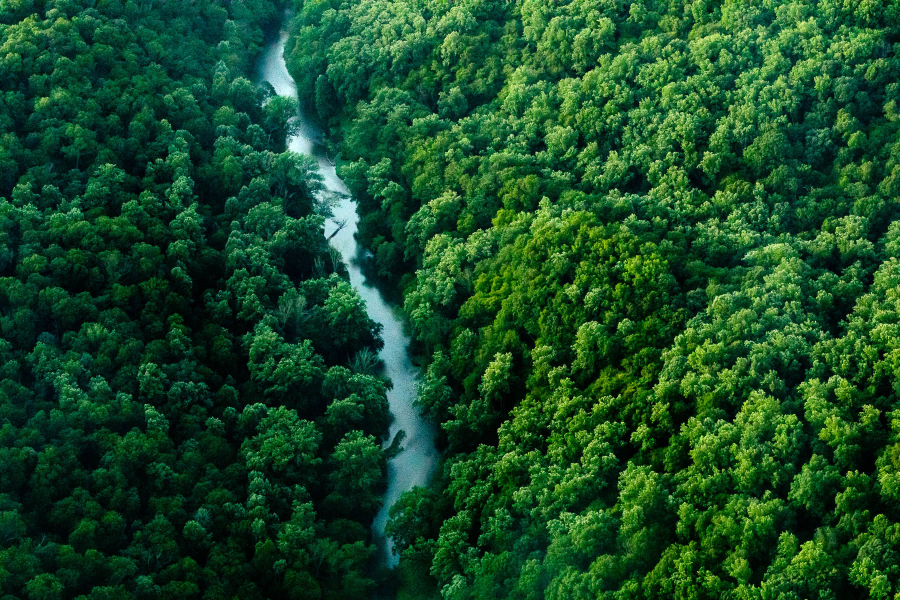
What can we do to reduce rising water temperatures?
The authors of the STAC report recommend multiple policies and practices to address the drivers of rising water temperature and their impacts on the ecosystem.
Conserving and expanding forests, streamside buffers and tree canopy in more developed areas emerged as the best practices for moderating water temperature. Trees shade the water, keeping it cool and decrease air temperatures through evaporation. Trees also filter rainwater underground where it won’t heat up from the sun. In urban and other developed areas, tree canopy reduces the temperature of pavement and asphalt, and helps water soak into the ground, which partially cools and reduces the runoff flowing through these areas.
The STAC members stress that decision makers in the Chesapeake Bay watershed not only focus on planting new trees but conserving existing forests, which have been lost at staggering rates due to development and other land uses.
Additionally, the STAC workshop evaluated the ability of different best management practices (BMPs) to reduce water temperatures. BMPs are currently used to reduce sediment and nutrient pollution from entering the Bay, as well as provide a range of additional benefits to people and wildlife.
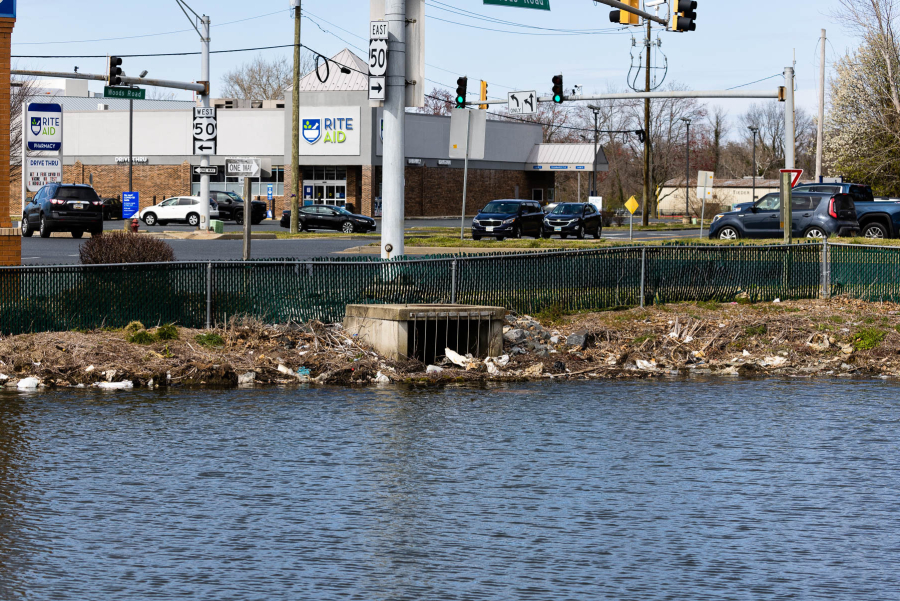
According to the workshop members, BMPs that are most effective at cooling the water include riparian forest buffers, upstream tree planting, urban stormwater infiltration and wetlands restoration, enhancement and rehabilitation. Improving soil health and infiltration may also help moderate runoff temperatures from farm fields. However, the workshop members also identified BMPs used to improve water quality that can contribute to warmer waters. These “heater” BMPs include stormwater retention ponds, floating treatment wetlands and vegetated open channels.
Because of this, the STAC report recommends that the partnership carefully scrutinize which types of BMPs it promotes. Since 1985, there has been approximately three times as much implementation of heater BMPs as cooler BMPs, suggesting that some of the practices being implemented to improve water quality may be having adverse, unintended consequences for water temperatures.
What’s notable is that as a partnership set up to achieve a variety of restoration goals, the Chesapeake Bay Program is already pursuing the top practices for moderating the effects of rising temperatures. Forest conservation, restoration of forest buffers, conserving and expanding tree canopy in developed areas and wetland conservation and restoration are all areas of focus for the partnership. However, these are some of the most challenging goals for the Bay Program to meet, given the high rates of development and population growth occurring in the Chesapeake region.
Long-term management recommendations
Based on their findings, STAC members also recommended a number of long-term investments to help lessen rising water temperatures effects on living resources and adapt to a changing Chesapeake Bay ecosystem.
Because of its cold-water habitats and importance to cold-water fisheries, the Chesapeake watershed’s headwaters were identified as an important place to accelerate conservation. This includes working with landowners in upstream states to conserve forests, plant additional tree buffers and limit polluted runoff. Downstream, large-scale efforts to protect and restore wetlands, oyster reefs, shorelines and SAV beds will help reduce vulnerabilities to tidal fisheries by potentially creating nearshore habitat with more suitable conditions. The STAC members emphasized developing criteria to help target these nearshore projects where multiple benefits, ranging from shoreline protection to water quality and habitat improvements, can be optimized.
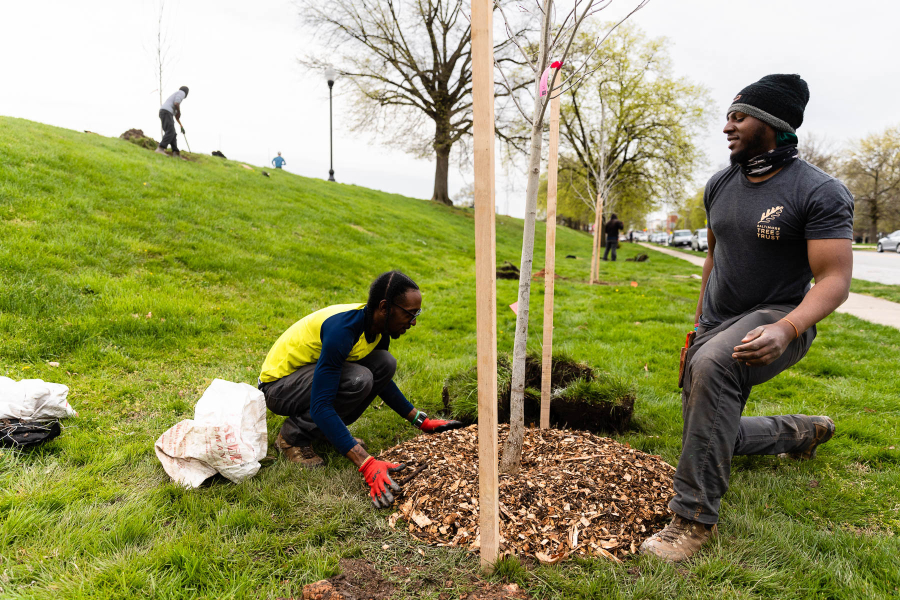
The workshop members also developed recommendations to inform management strategies for the Bay’s recreational and commercial fisheries. It was suggested that fishing guidance is established, such as catch and release protocols, that are based on a fish’s survival threshold related to heat and dissolved oxygen. The workshop members also recommended greater collaboration between resources managers and scientists to ensure that fisheries are being managed in a way that aligns with new research, including integrating social science. These efforts are needed to better communicate future climate conditions and expected scenarios for Bay fisheries and those moving up into the Bay from the south.
Finally, workshop members identified several knowledge gaps that, if filled, could better inform restoration and land-use decisions. The authors of the report recommend an increase in water temperature monitoring, especially in smaller streams, and further analyzing existing data from larger streams and rivers. Biological monitoring of prey and predators in tidal waters was also mentioned as we are currently lacking data to assess population impacts from seasonal temperature changes. It was also recommended that a heat wave alert system be developed to give resources managers a better understanding of when extreme rises in water temperatures occur and how to protect marine life accordingly. Modeling temperature change, the way we model pollution loads, could also be a worthwhile investment.
Chesapeake Bay Program begins tracking water temperature changes
As part of our Climate Resiliency Goal, the Chesapeake Bay Program is working towards tracking data related to water temperature change.
This type of information can be used to guide restoration efforts at the Bay Program and allow conservation groups outside the partnership to influence state and federal policies, such as conserving more forests and investing in implementation of cooling BMPs.
Across the watershed, jurisdictions are united in their concern over rising water temperatures.
Whether it's brook trout in the Bay’s headwaters or striped bass in the mainstem, our natural resources are already being impacted by temperature changes. Improving water quality is poised to become even more challenging in all jurisdictions of the watershed due to warming waters. But we can take action now to lessen vulnerabilities to important habitats and living resources.

Comments
There are no comments.
Thank you!
Your comment has been received. Before it can be published, the comment will be reviewed by our team to ensure it adheres with our rules of engagement.
Back to recent stories